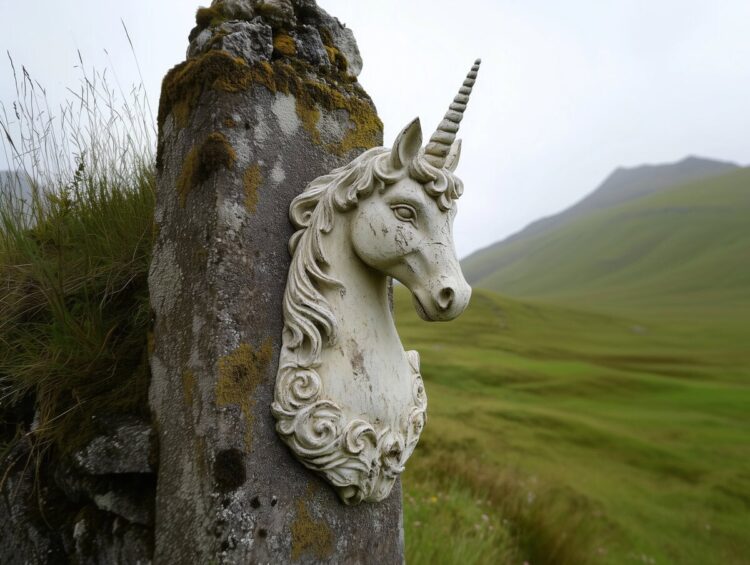[ad_1]
The Unicorn on the Scottish Royal Coat of Arms
Because of the Scotland-unicorn connections, the unicorn soon became an important symbol in Scottish heraldry.
From around the mid-1500s onwards, Scotland’s royal coat of arms* began to feature two unicorns.
*by the way, just in case you’re not familiar with the term, a ’coat of arms,’ in the words of Cambridge Dictionary, is:
“a design, usually in the shape of a shield (with straight sides and a rounded or pointed lower edge) which is the symbol of a family, university, city, or company, [or, in this case, country].”
But in 1603, that royal Scottish coat of arms changed again.
In 1603, the Union of the Crowns occurred (that’s when England and Scotland began having a joint monarch—which was King James—instead of separate monarchs). And when that happened, the coat of arms was changed…
… the English two-lions design was merged with the Scottish two-unicorns design…
… to make a coat of arms with a lion on one side, and a unicorn on the other.


And still to this day, the UK royal coat of arms features one lion and one unicorn, just like King James wanted all those years ago. And the version with two unicorns is no longer the Scottish national emblem.
On this current royal coat of arms (and on any other coat of arms ever featuring the Scottish unicorn), the unicorn is depicted with gold chains wrapped around its neck and body. No one really knows exactly why this is… but most believe these chains symbolize how Scottish monarchs were able to tame one of the world’s most untamable beasts.
In the 15th and 16th centuries, some Scottish coins featured unicorns—and according to some sources, two of these gold coins were literally known as ‘the unicorn’ and the ‘half-unicorn.’ Yep, Scotland really loves unicorns.
[ad_2]
Source link



No Comments
Leave Comment